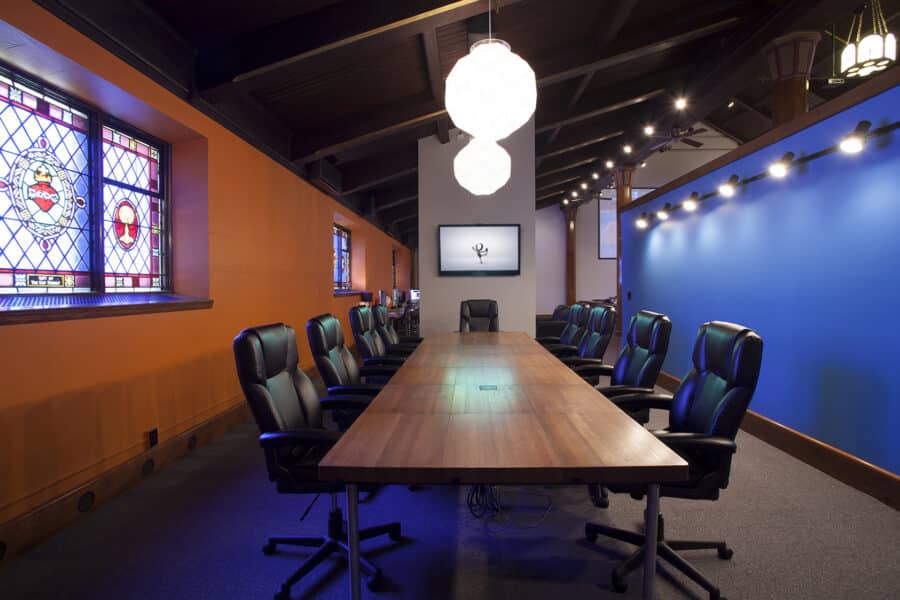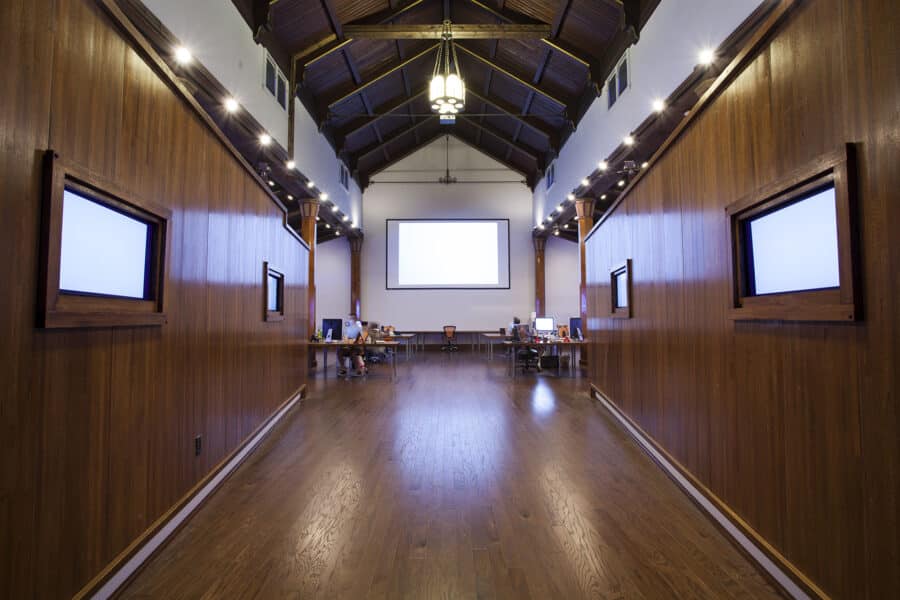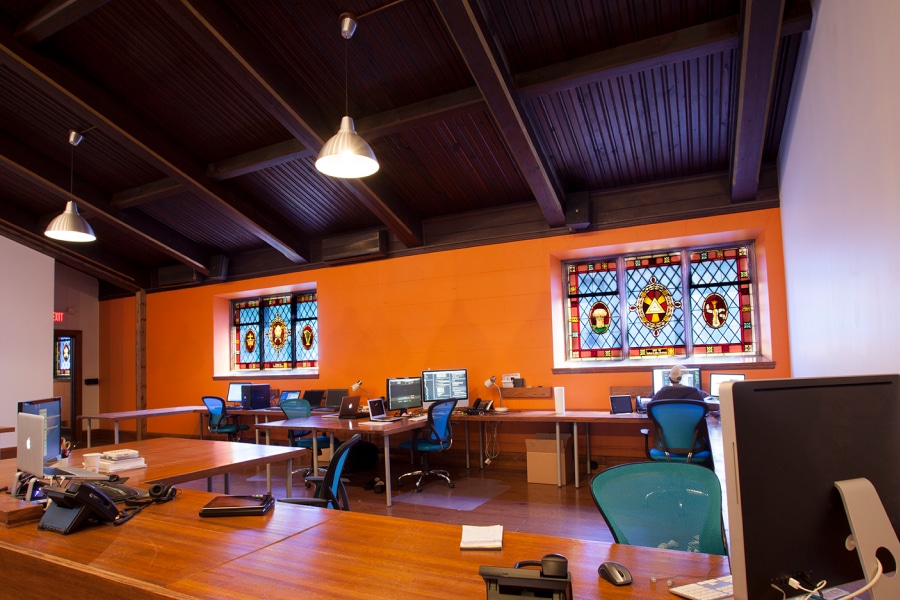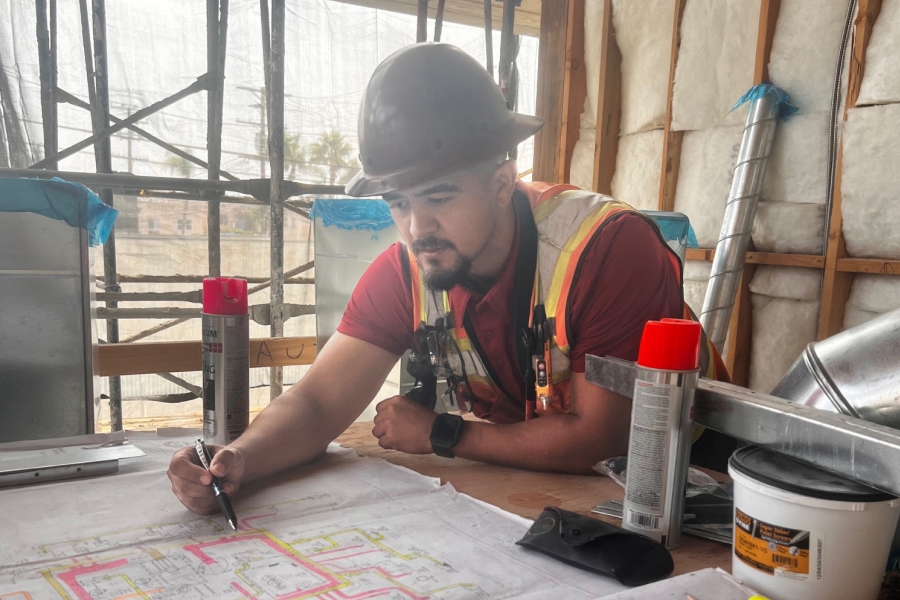Over two decades ago, the late Rev. Wendell Williams and his wife Donna purchased the abandoned 40,000-square-foot St. Agnes Church in Cohoes, New York. They bought the 1890s Gothic Revival cathedral for $50,000 in the high-poverty area that was once a bustling textile manufacturing center.
Initially a home for their congregation, it also now houses the Connect Center, a youth-oriented community center. When purchased in 2001, it immediately needed a $1.1 million roof renovation. Five years later, the ceiling plaster, as high as six stories, began falling in.
Work is about 75% complete and more renovations on the building are needed, ranging from steeple repairs to rotting window frames housing 132-year-old handcrafted stained-glass windows. But progress is slow because of funds and challenges associated with repurposing old churches.
“It’s been a journey to renovate this church and create these safe spaces for youth,” said Ben Williams, Rev. Williams’s son. Ben now serves as the director of the Connect Center for Youth. “It is important to me to preserve the legacy, and it is very important, and it’s part of our story even though it’s a pain in my wallet most of the time.”
Look around any neighborhood, and chances are you’ll see at least one, if not more, abandoned churches as congregation populations decline. Experts predict that as many as 100,000 churches in the United States will close in the coming years.
“Most communities don’t want the buildings themselves torn down but adaptively reused rather than replaced with something new, and that is where people run into design challenges,” said Andrew Torres, a licensed architect in New York City working with Gemini Rosemont Development.
But there are success stories. In St. Louis, skateboarding enthusiasts converted St. Liborius Church, a 150-year-old church, into an indoor skating park. Other abandoned churches are now roller rinks, bars or restaurants, professional offices, Airbnbs and even a future cultural arts facility for a public school.

Repurposing churches presents unique architectural and building-related challenges even though it offers the opportunity to preserve a historic structure. Steeples, soaring ceilings, outdated plumbing and heating, and cooling system repairs are costly. Often, the materials and expertise needed to fix features like stained glass windows and steeples are hard to find.
“A lot of churches have deferred maintenance and neglect by the congregations selling them. It is a lot of work to bring these back to life,” Torres said. “Churches are highly customized, not repeating designs or details existing conditions to contend with, and with that people can run into many challenges, especially when converting a church to residential use.”
Meeting Americans with Disabilities Act standards can also be a challenge depending on the church’s design. Williams had to build a new egress and install ramps, but so far, he’s only had the funds to do so on one floor.
“There’s a time cost too. I’m spending money and energy fixing my space and not working on the mission of my organization,” Williams said. “I love that we saved this building and can give it back to the community, which provides more safe space and safer streets, but I would only get into something like this again if I knew I had the bankroll behind me.”
Transforming churches into modern use spaces is capital-intensive and requires vision. But for the right customized project, it’s an opportunity to preserve a community landmark and architectural style that a new build can never replicate.
Michelle Dinsmore sees it as her mission to transform historical buildings with architectural history into modern-day spaces. So far, she has transformed two churches—one into a vacation rental and the other into offices for the marketing studio she co-owns with her husband.

Comparatively, the church Dinsmore purchased was better maintained than the one the Williams family purchased. With a good roof and structure, they could focus on the interior, which included reusing pews for molding, desks and conference tables. Their adaptive reuse won a Historic Albany Merit award.
One of the biggest challenges in transforming the church was designing the agency’s recording studio. The couple needed to identify architects with expertise in insulating and isolating sections of the 12,000-square-foot church and updating the air conditioning and heating system so that its operation doesn’t interfere with recording.
“You have to have a very clear purpose and understanding to get a budget to create a plan that honors the lineage of the building,” she said.
Repurposing churches may be more viable for private owners than commercial developers. Torres points to the ancient notion of spolia, the idea of repurposing cut stones or decorative elements from old buildings in new construction, as a potential opportunity. One example he points to is the Hagia Sophia in Istanbul, Turkey, once a Christian church, then a mosque, a museum and now again a mosque.
“Many churches have column capitals in carved marble that need to be removed for spaces to be opened up. You can save some of those stone elements and use them elsewhere in a different format,” he said, adding that it’s great “when people take what was there before and put it in a new context and celebrated instead of having it be hidden or demolished.”













